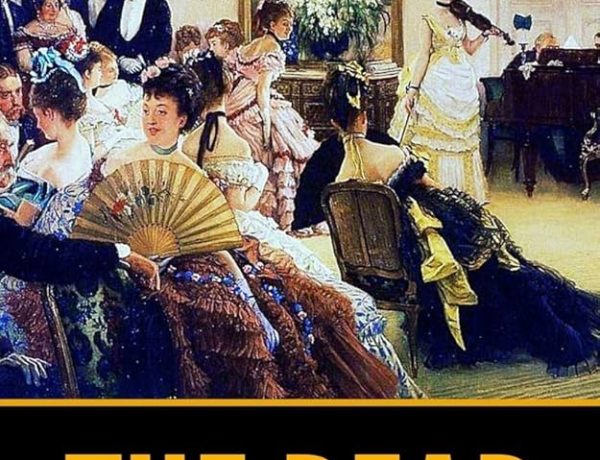Last edited on October 3, 2024 by Sarah Pereira
Brief Summary
The Scarlet Letter by Nathaniel Hawthorne follows a woman, Hester Prynne (her lastname rhymes with sin!) and her affair with a Puritan minister, Arthur Dimmesdale (his name relates to the word dimless!) after believing her husband was lost at sea on the way to Boston from England. With Dimmesdale, she has a child, Pearl. Under the Puritan law and religion, she committed a sin and thus was forced to wear a scarlet letter ‘A’ (for Adultery) on her chest for the rest of her life. The story follows Hester navigating this new life where her sin is obviously displayed on her chest.
Cross
Set in the early settlements in New England, Boston, it is evident that Christianity and God play a large role as the determining factor of people’s lives. Hawthorne excellently juxtaposes the Puritans leaving England and Hester and Pearl leaving New England. The Puritans fled Europe due to religious persecution mainly in England over their beliefs. They wanted a place where they didn’t need to hide their religious beliefs in fear. Except, their hypocrisy is shown when the Puritan clergymen and religious community force everyone in Boston to adhere to their religion. At the very end of the novel, Hester, who has lived a life of sin and shame as punishment due to her adultery/affair with another man after thinking her husband was dead, flees so she can live in freedom and peace with her daughter, Pearl. Other examples of the Puritan belief being imposed in Hester’s life was when the townspeople were thinking of killing her for adultery at the start of the novel, when clergymen threatened to take her daughter away because they believed she wasn’t properly teaching her about god. They also killed women they believed to be witches like Mistress Hibbens.
Boat
This is both the start and end of the novel. Both Hester and her husband arrived by boat from England to Boston, albeit different ones. It also was what her husband, Roger Chillingworth was on when he was lost at sea, which presents a conflict because Hester thought he was dead and thus had an affair with Dimmesdale. It is what Hester and Pearl use to escape the suffocating confines of Puritan society. The boat is a symbol of Hester running away from her sins and finally no longer feeling tied down by religion in Boston. She later returns to Boston after being in England again, on a boat.
Rose Bush
The rose bush symbol demonstrates how Hawthorne is able to integrate and weave nature as a positive thing in an overall bleak society. By being situated right outside the prison house which is made of strong, durable wood and iron rods flanked with spikes, the rose bush provides a shocking positive. The prison is used to restrain sinful people, and the rose’s growth creates the direct opposite of that. It can be representative of multiple things such as strength for the prisoners, rejecting Puritan laws and way of life, Hester and Dimmesdale’s relationship, and Hester’s daughter Pearl. The first time Pearl sees a rose, she views herself within it. This makes sense because she is the “rose” of that society as everyone believes she is evil. In a way, the rose is out of place which is symbolic of many of the characters in the novel, especially Pearl and Hester. All of these things help fill the reader with hope when surrounded by a pretty much hopeless setting.
Meteor
The first time the letter ‘A’ is perceived to mean something other than the sinful, Adultery is when Hester, Pearl and Dimmesdale stand out in the scaffold. This is where Hester was tried and punished for committing adultery. They see a meteor in the shape of an ‘A’ in the sky. Dimmesdale is filled with remorse and sickness because he believes it means he should also wear the letter ‘A’ like Hester as he helped her commit the sin of adultery. At that moment, he thinks that everyone knows about their sin and feels terrible. However, the rest of the community believes it means Angel because Governor Winthrop had died and since the Puritans believed he was good, the ‘A’ was a symbol of honor and respect. This represents a shift from something that was once a sinful, shameful thing to become something sweet, almost lovely. The meteor also serves as foreshadowing to the community finally finding out who Hester had an affair with: Dimmesdale.
The Letter ‘A’
As the novel progresses, the A for Adultery loses nearly all its negative meaning and transforms into an empowering part of Hester. At the start it was a “symbol of her dishonor” and Hester had to wear it as punishment. Then the ‘A’ meant Able. For Pearl (her daughter), it is a symbol of pride, and she often likes to brag about it. Like Hester, she has come to identify it as a part of her identity as she has never seen her without it. The moment that Hester removes her ‘A’, Pearl can’t recognize her. Pearl is demonstrative of an innocent POV of the letter; being too young to understand the sin her mother committed. She even aspires to one day also have the letter ‘A’. For outsiders unaware of the village customs and religion of the Puritan town, it’s a sign of her being of a high social class. The physical ‘A’ sewn into her chest also creates a conflict with the idea of God in Christianity because the villagers themselves impose the forever wearing of it on Hester, not God himself. Even after they have died, both Hester and Dimmesdale are forced to have the letter ‘A’ on their gravestones, thus the now insignificant A lingers. It’s ironic how something so insignificant is forced for eternity to be attached to Hester and Dimmesdale which basically makes it significant again.




No Comments